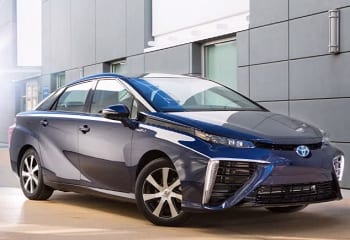Toyota prepares to launch hydrogen fuel cell vehicle in California
September 24, 2015Automaker prepares to launch Mirai in California, though it may encounter challenges
Toyota is gearing up to launch its new fuel cell vehicle, the Mirai, in California in the near future, but prospects for the new car may not be favorable. While Toyota has found success in the past with its clean vehicles, California may not be prepared to support the widespread adoption of vehicles equipped with hydrogen fuel cells. The state has been investing in the development of new hydrogen fuel stations, but the infrastructure may not be ready to meet the needs of consumers.
Toyota has found success in the clean transportation space before
In 1997, Toyota launched its Prius hybrid. Over the years, the vehicle has become quite popular with consumers that are interested in clean transportation. Toyota is hoping to mimic the success of the Prius with the Mirai, but may find it difficult to do so, especially as other automakers prepare to launch fuel cell vehicles of their own. Toyota may find it difficult to promote the vehicle among consumers due to the fact that gas prices are plummeting, making conventional vehicles much more financially viable for consumers.
Lack of a hydrogen fuel infrastructure may be a major hurdle for Toyota
 One of the biggest challenges that Toyota will face is the state’s lack of a hydrogen fuel infrastructure. The California Fuel Cell Partnership anticipates that approximately 40 hydrogen stations will operational by the end of 2016. By 2020, some 100 stations will be functional throughout the state. Without a comprehensive hydrogen infrastructure, fuel cell vehicles may struggle to find any kind of success. Automakers interested in fuel cells have been investing in the development of new stations throughout the state.
One of the biggest challenges that Toyota will face is the state’s lack of a hydrogen fuel infrastructure. The California Fuel Cell Partnership anticipates that approximately 40 hydrogen stations will operational by the end of 2016. By 2020, some 100 stations will be functional throughout the state. Without a comprehensive hydrogen infrastructure, fuel cell vehicles may struggle to find any kind of success. Automakers interested in fuel cells have been investing in the development of new stations throughout the state.
Honda has already brought a fuel cell vehicle to the market
Toyota will not be the first automaker to bring a fuel cell vehicle to California. In 2008, Honda released its FCX Clarity, which is powered by a hydrogen fuel cell. The vehicle has been unable to find commercial success, but it has served primarily as a showcase for what could be accomplished through the use of clean technology.

 With over 15 years of reporting hydrogen news, we are your premier source for the latest updates and insights in hydrogen and renewable energy.
With over 15 years of reporting hydrogen news, we are your premier source for the latest updates and insights in hydrogen and renewable energy.